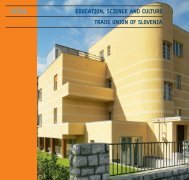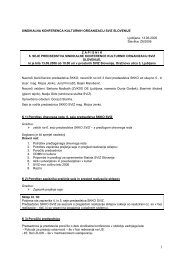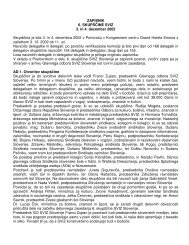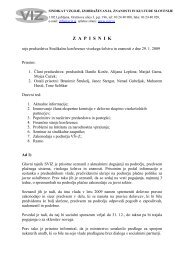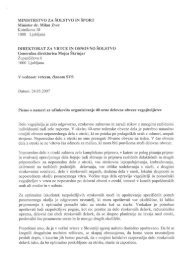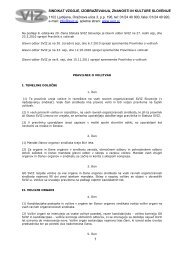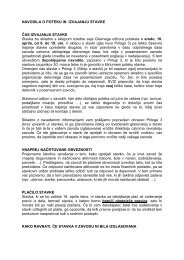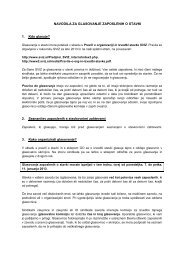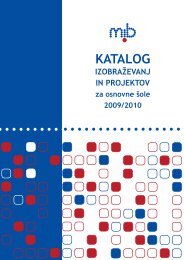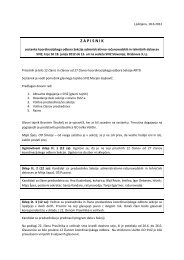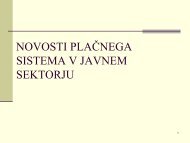You also want an ePaper? Increase the reach of your titles
YUMPU automatically turns print PDFs into web optimized ePapers that Google loves.
imming with joy. Written partly for the composer’s own pianistic needs,<br />
the concerto is conceived as a kind of parody of the classical-romantic type<br />
of virtuoso concerto: instead of grandiose themes and dizzying passages we<br />
are witness to numerous musical ‘jokes’, allusions and parodic elements. Even<br />
the ensemble is rather unusual, as the strings are joined by a solo trumpet<br />
(in writing this part Shostakovich had in mind the first trumpeter of the<br />
Leningrad Philharmonic, Alexander Schmidt), whose commentary seems<br />
to constantly ‘disturb’ the smooth flow of music. The parodic character of<br />
the work is announced at the very beginning, with its evident allusion to<br />
Beethoven’s Appassionata sonata. The second movement is a melancholy<br />
waltz, the third is conceived as a kind of free improvisation, while the concluding<br />
movement again brings a kaleidoscope of intentional banality (flirting<br />
with jazz and popular music), along with caricatures of music of the past and<br />
robust ostinatos. This was the last time that Shostakovich could allow himself<br />
such open joviality, mockery and experimentation – after devastating criticism<br />
(“chaos instead of music”) the composer was forced to fundamentally<br />
distil his musical language.<br />
The two chamber works by Szymanowski and Franck both fall into the late<br />
compositional periods of the two masters. Karol Szymanowski was initially<br />
under the influence of the symphonic music of Richard Strauss, but later<br />
broadened his horizons with journeys to Italy and northern Africa. Here he<br />
was ‘infected’ with a love for the Mediterranean, antiquity and mythology,<br />
and his music took on impressionist influences. The highly aestheticised music<br />
of Szymanowski again underwent decisive changes only after 1922, when<br />
the composer travelled with increasing frequency to Zakopane, where he<br />
drank in the folk music of the people from the Tatra Mountains. During this<br />
time, the expression of folk music found its way into the composer’s music,<br />
but Szymanowski treated folk music in a similar way to Bartók: he practically<br />
never actually cited folk song in his works, but instead tried to form his own<br />
musical technique according to the model of folk music. Thus the Second<br />
String Quartet, from 1927, brings an unusual alloy of explicitly sensual music,<br />
almost decadent music in a harmonic sense, with the rhythmic charge of folk<br />
music. In its outline the first movement is still reminiscent of sonata form,<br />
while the second movement is a scherzo driven on by the powerful rhythms<br />
of folk music. The last movement is conceived as a double fugue on a folk<br />
theme that the composer had already used in his ballet Harnasie.<br />
PROGRAM / PROGRAM<br />
Unusual, and apparently diametrically opposed, influences also come together<br />
in the characteristic musical idiom of César Franck. Typical of the<br />
composer are modest piety, Christian mysticism, interwoven with the harmonic<br />
and musical-technical innovations of the Wagnerian musical drama<br />
in the Lisztian symphonic poem. Both influences most clearly permeate the<br />
composer’s work in his late opus. Franck wrote the Sonata for Violin and Piano<br />
in 1886, as a wedding gift to his Belgian compatriot, the celebrated violinist<br />
Eugèn Ysaÿe. In spite of its apparently regular four movement scheme the<br />
composition is explicitly cyclic, similar to the composer’s celebrated Symphony<br />
in D Minor. In the opening bars of the first movement, which is conceived as an<br />
31



